Balmy Bovines – raising cattle in Samoa
Written by Dr. Renee Orange, Veterinarian, Ministry of Agriculture and Fisheries, Samoa.
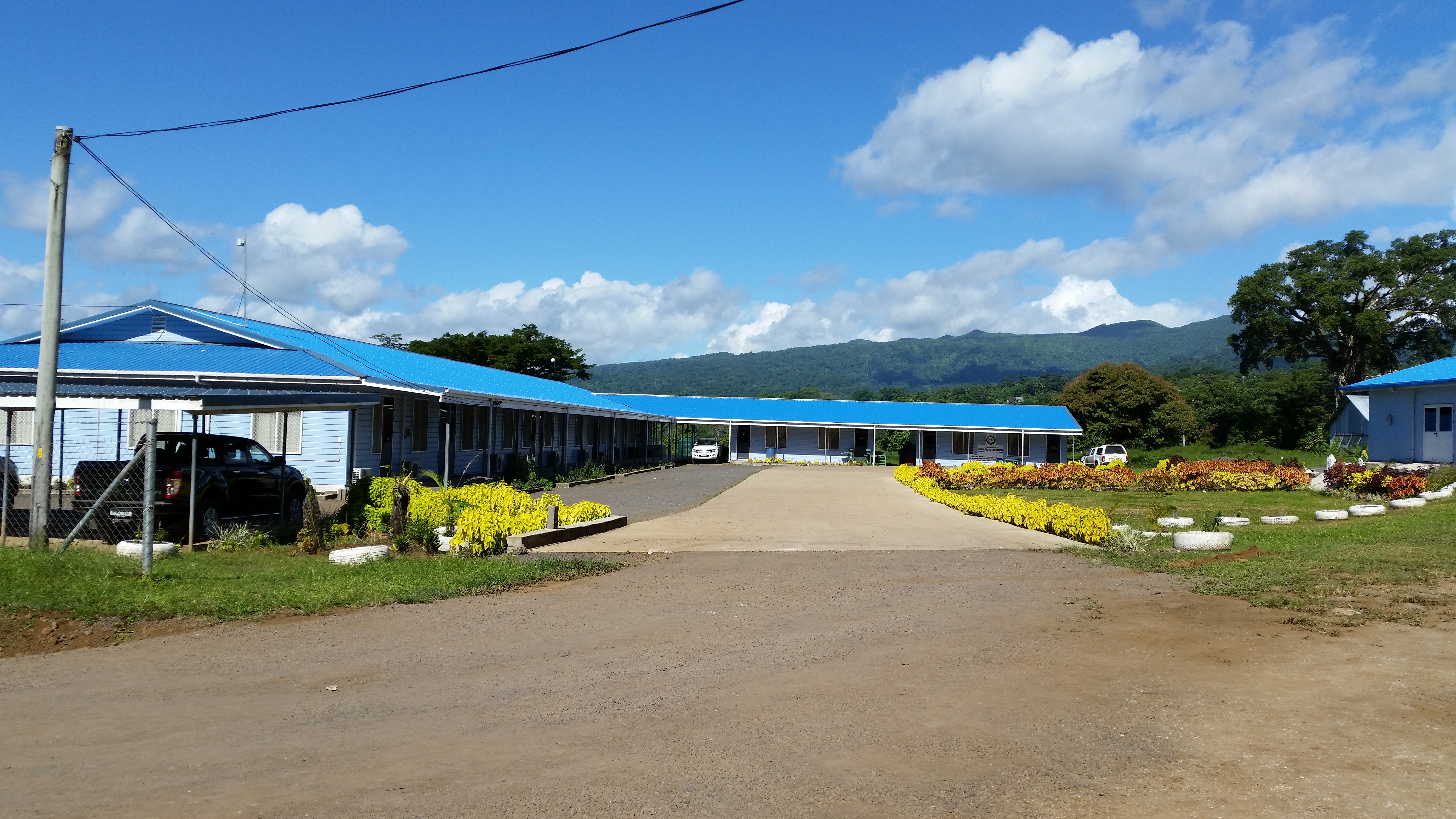 The Animal Production & Health Division (APHD) of the Ministry of Agriculture and Fisheries (MAF) office at Vaea, near the centre of Upolu Island.
The Animal Production & Health Division (APHD) of the Ministry of Agriculture and Fisheries (MAF) office at Vaea, near the centre of Upolu Island.
56,000. According the Samoa Bureau of Statistics Agriculture Survey, that was the total number of cattle in all of Samoa in 2015. We have a population of about 180,000 people that live on 4 out the 10 islands making up Samoa. 2 are large, and 2 are very small. The 2 large islands, Upolu and Savaii, are home to most of the human and animal population, with Upolu also home to the capital, Apia, a rapidly developing town on the north coast of the island.
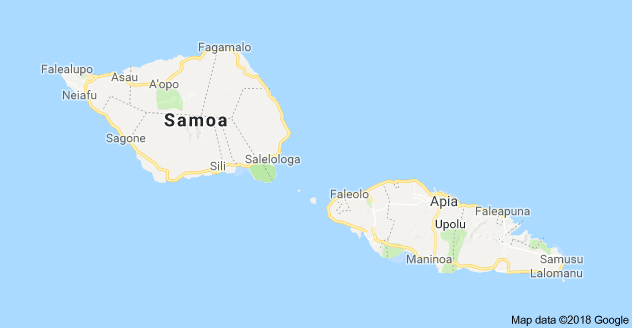 Samoa is made up of 10 islands but only 4 are populated. Total land area is 3,030 sq. kms and is volcanic in origin. Basically to grow something you just need to stick it in the ground.
Samoa is made up of 10 islands but only 4 are populated. Total land area is 3,030 sq. kms and is volcanic in origin. Basically to grow something you just need to stick it in the ground.
Subsistence level production systems are the most common, with most families owning anywhere from 1 – 15 animals. Small herds in the village will sometimes consist of animals all owned by different people, grazed on a communal piece of land, or animals will be tethered to trees. Semi-commercial producers are mostly on land lease and at this stage will have issues with infrastructure. It is labour intensive and unless the boss is fencing as well, it is hard for a lone fencer to stay motivated to continually fence and repair one boundary fence let alone multiple paddock fences. Most farmers at this stage have day jobs – executives or government employees, that are only able to get to their farm in the weekends. Labour is either ad-hoc or provided by a family member that lives on the land to look after it and tend to the animals during the week. There are only a very few herds with above 300 animals here.
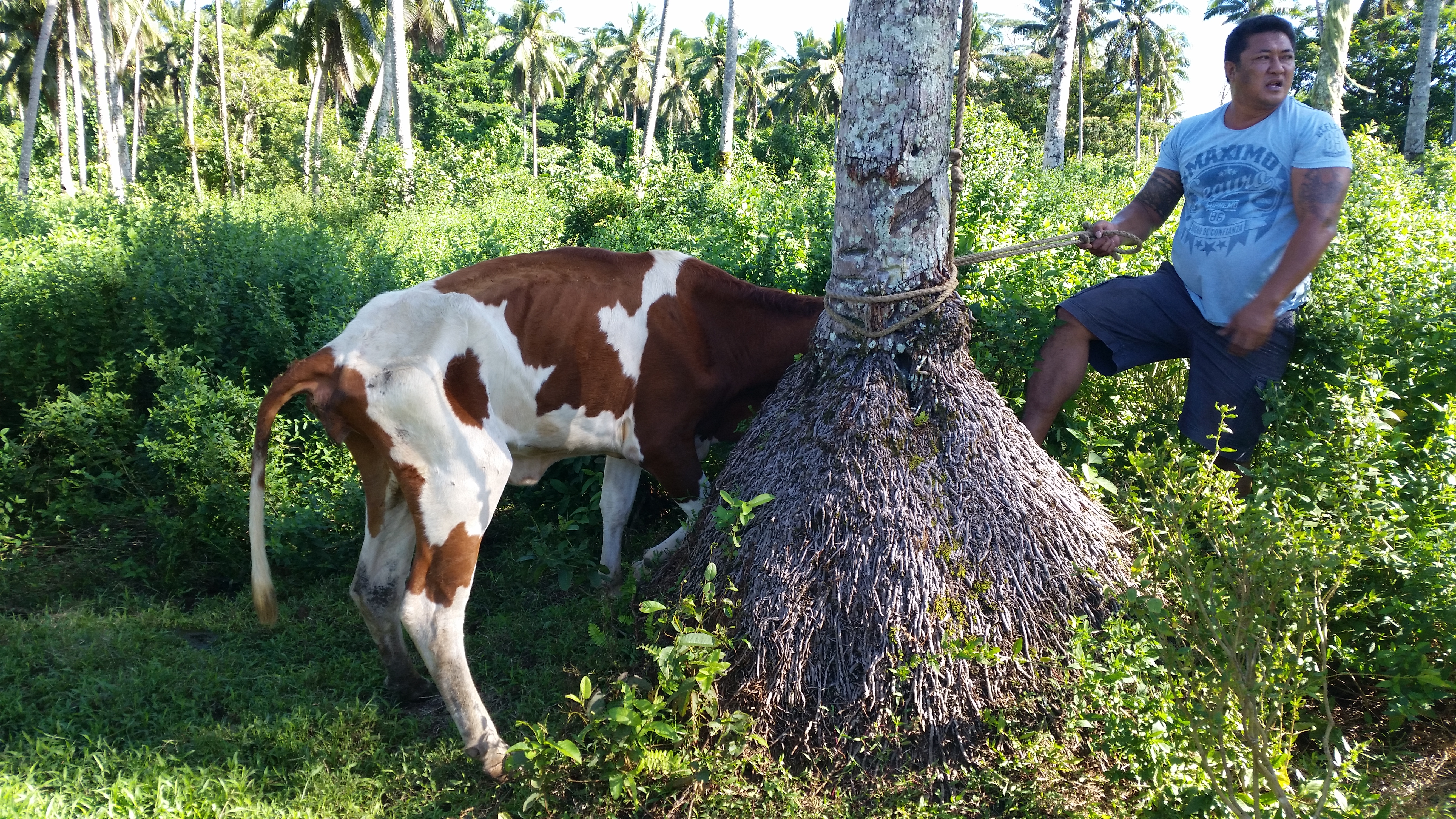 Many of our farmers do not have stockyards, so to safely restrain an animal during examination and treatment we usually have to tether it to a tree, sometimes, we cast the animal and other times we use chemical sedation. We have 2 tranquilizer guns also that allow us to restrain wild cattle.
Many of our farmers do not have stockyards, so to safely restrain an animal during examination and treatment we usually have to tether it to a tree, sometimes, we cast the animal and other times we use chemical sedation. We have 2 tranquilizer guns also that allow us to restrain wild cattle.
Cattle are a valuable cultural item. They are slaughtered and quartered and the pieces, including parts of the offal, distributed as gifts during large events. This is most common at weddings and funerals. The Samoan culture is largely oratory – the talking chief from each family must be skilled at the highest level of Samoan language which is largely proverbial and very picturesque. At these events, before the actual day of the wedding or the funeral, the family of the bride or the recently deceased (some might say these are one and the same thing) receive chiefs from related families and villages and engage in a formal exchange of greeting and either congratulations or condolences, followed by the exchange of gifts. These gifts usually consist of fine mats, siapo (or tapa cloth – a mat type blanket made from the beaten bark of the mulberry bush and decorated with designs), large whole cooked pigs, pieces of raw beef (the most important piece is the shoulder – given to the chief with the highest title) and now boxes of tinned fish, boxes of tinned corned beef and large amounts of money. Cattle therefore act as money in the bank, as security.
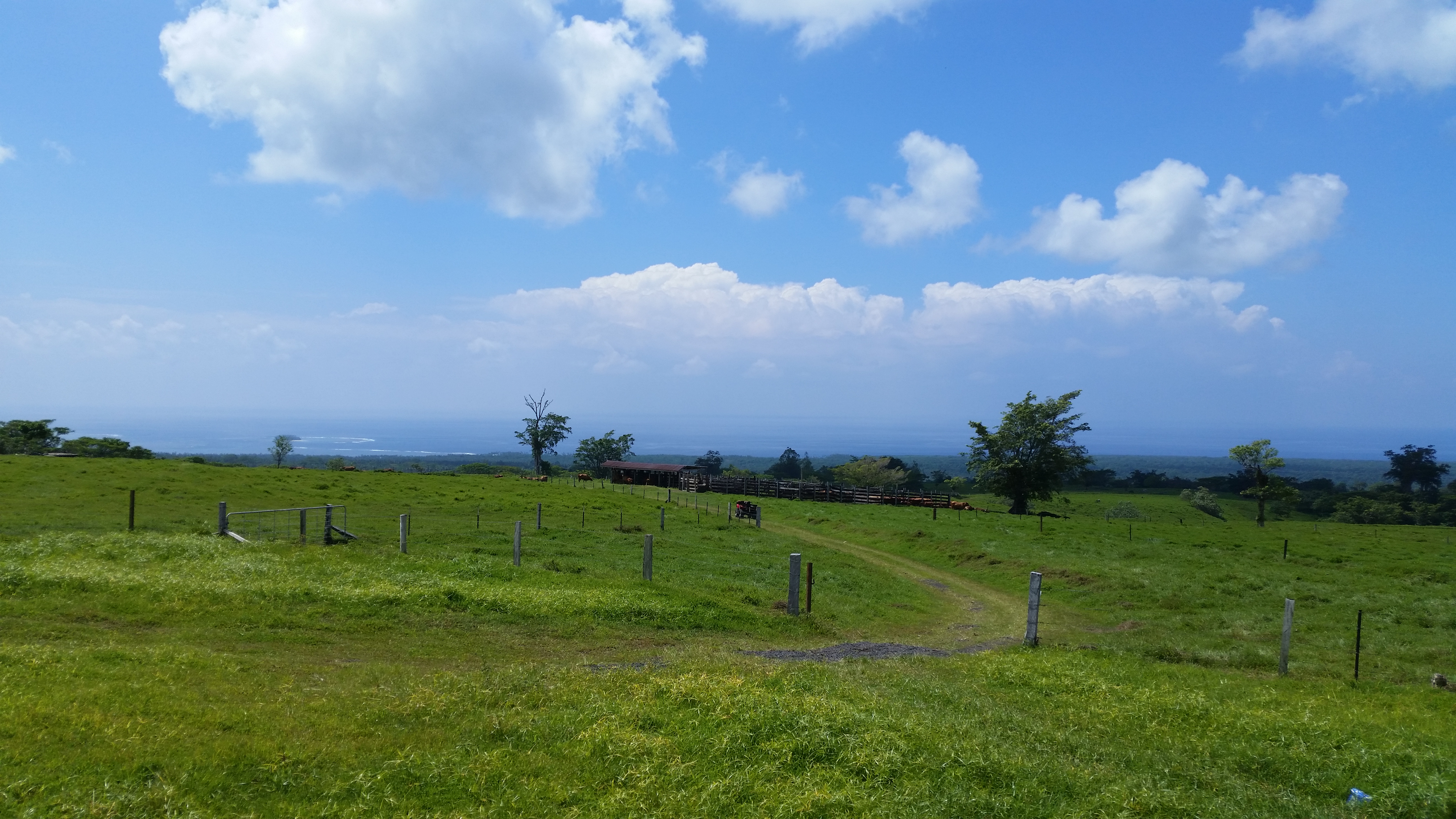 Beef farms here offer wonderful views. The grass is always green, however, it can be deceptively so because it is usually due to an invasive weed called Navua Sedge.
Beef farms here offer wonderful views. The grass is always green, however, it can be deceptively so because it is usually due to an invasive weed called Navua Sedge.
Slaughter is done by the farmer on his farm. The animal is shot in the head and then skinned and eviscerated on the ground. It is then quartered and put in the back of a truck and covered with tarpaulin or banana leaves and transported to the retailer, who weighs it and pays accordingly. Carcasses can get very contaminated. In addition our customs have meant that the supply of local beef to retailers is sporadic and of wildly variable quality. As such, most local beef ends up as mince. Hotels and restaurants serve New Zealand steaks.
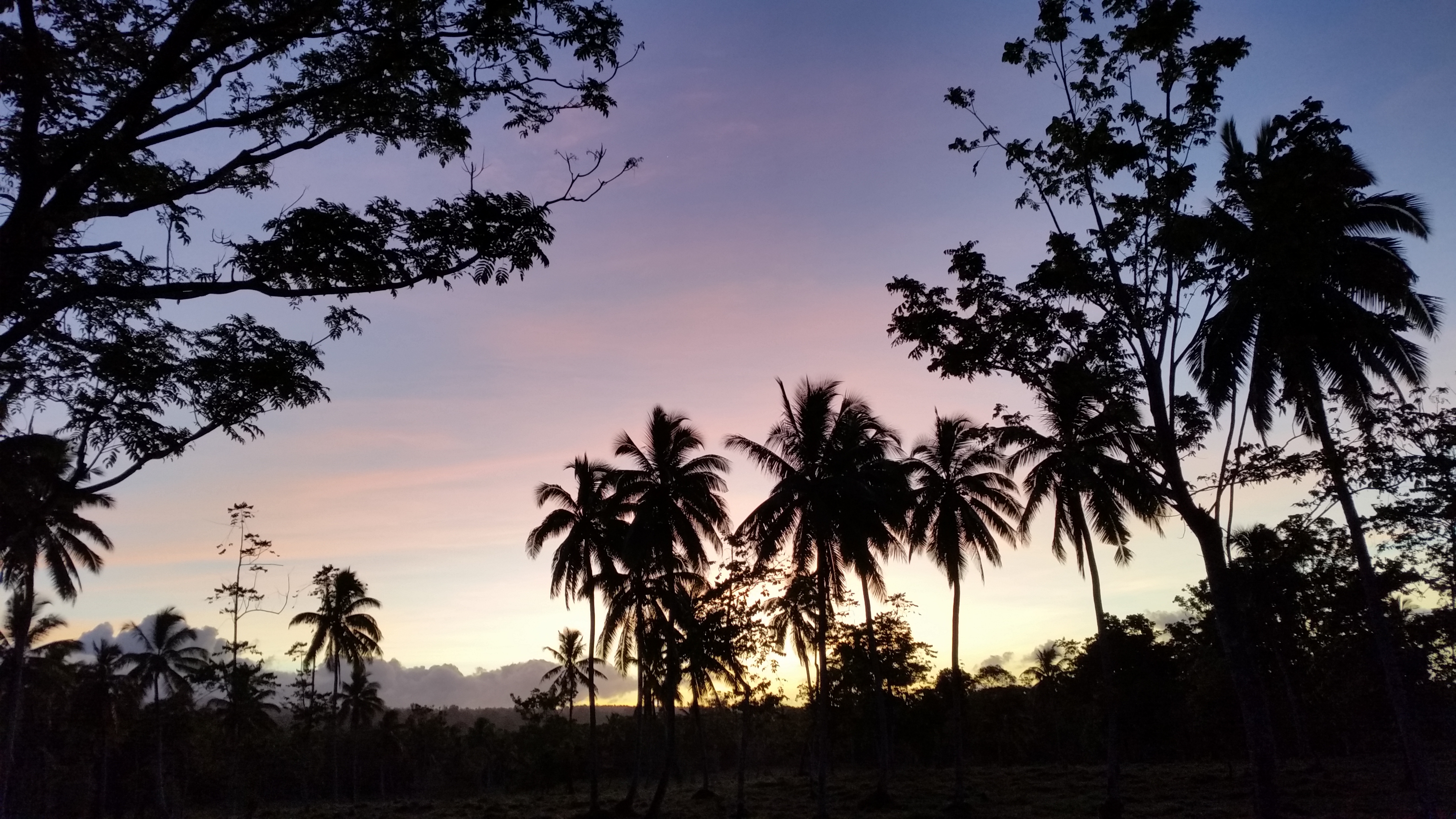 Early mornings are hard to wake up for but the beautiful sunrises and cool temperatures make it ideal to do major musters or pregnancy testing, as the heat of the day is punishing for both man and beast.
Early mornings are hard to wake up for but the beautiful sunrises and cool temperatures make it ideal to do major musters or pregnancy testing, as the heat of the day is punishing for both man and beast.
This scene is slowly changing as the need to encourage import substitution mounts. New legislation, more farmer trainings and a mobile slaughter unit are just some of the things that have been put in place to improve the quality and hygiene of beef supplied to local retailers. Our customary gift exchanges will not be regulated, however people will not be able to sell gifted meat to retailers anymore, unless slaughtered in the prescribed manner and certified by a meat inspec tor.
May I say that the following stories may make us seem a bit like bumbling ning nongs somtimes. That is not my intention. I just wanted to share some entertaining stories while trying to show you what cattle farming is like here, and to help us not seem so alien. I have the utmost respect for my colleagues, and as I am only 4 years into my career, I do not have the experience and wisdom that they do. I hope you will read these stories therefore without censure.
It is an exciting time for the beef industry here, and for the country as a whole. I look forward to the day that I can order a local steak with confidence, and see our farmers and their families prosper.
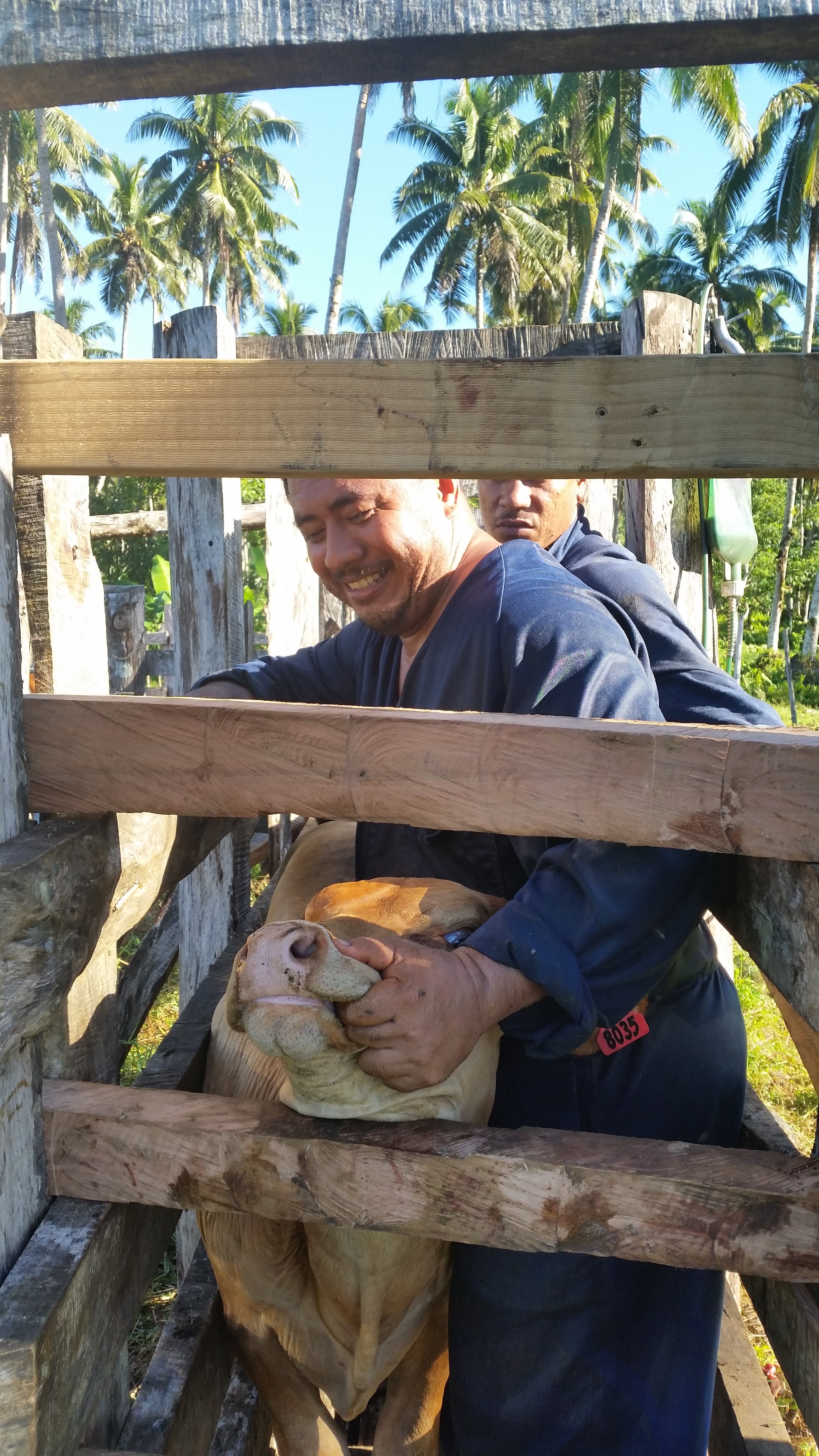 Some stockyards are only barely functional. We are so lucky to have a team of strong, dedicated and skilled paravets that are able to restrain animals safely when needed. Here, Evile, one of our most experience paravets, restrains a weaner for drenching and examination as part of routine musters to collect important health and production information.
Some stockyards are only barely functional. We are so lucky to have a team of strong, dedicated and skilled paravets that are able to restrain animals safely when needed. Here, Evile, one of our most experience paravets, restrains a weaner for drenching and examination as part of routine musters to collect important health and production information.
